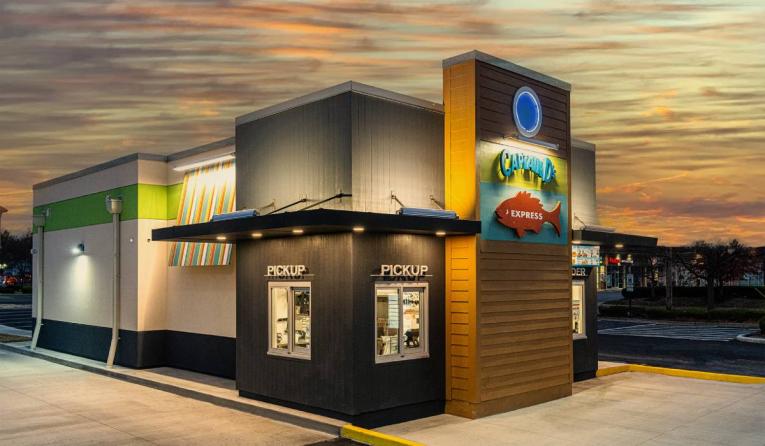Soaring costs are having a major impact on development.
Source: QSR Magazine
A major real-estate industry slogan since the early 20th century has been “location, location, location.” But these days, it easily could be recast as “inflation, inflation, inflation.”
Location certainly remains key to most types of real estate, including for quick-service restaurant operators making decisions to locate new stores or retain existing ones. Rising prices, however, on everything from land and rents to borrowing money, are now playing just as important a role.
The soaring costs and longer lead times for construction—both in materials and labor—is having a major impact on development. Add in restaurant equipment supply chain issues, plus margin-based pressures from commodity, staffing, and utility inflation, and the dilemma only grows.
The enthusiasm for development is definitely lower than a year or 18 months ago due to inflation and margin contraction, says Peter Saleh, managing director and restaurant analyst for financial services firm BTIG. “[Operators] lost a lot of margin in 2022,” he says.
Saleh adds margins always return to historical levels due to factors such as pricing, commodity deflation, and efficiencies, but recovery takes time. “Development tends to follow the same directional trend as margins and unit economics,” he says, so even as margins likely improve this year, there’s “not much hope … for a decisive snapback” in store growth.
Despite the headwinds—and, perhaps, in some cases because of them—“there is more demand for good sites, especially in [quick service], with a drive-thru and perhaps double or triple drive-thrus,” says Barry M. Wolfe, a Fort Lauderdale, Florida-based senior managing director of investment at national real estate firm Marcus & Millichap.
Of course, he notes, demand for top-notch sites in turn pushes the cost higher.
“Everyone is looking for unicorn, drive-thru locations,” says Sam Fonseca, chief operating officer at Roll-Em-Up Taquitos, a young, southern California-based company. Rather than compete with deep-pocketed big players, his chain seeks sites that help franchisees pay less rent.
For many operators in various parts of America, “land costs really need to come down,” Wolfe says. “It is a challenge for developers or owners to find land that works for them.” At the same time, “we’ve kind of maxed out on the rental rates,” which, he notes, need to move downward some to work for most operators.
A related issue, he adds, is an increasingly lengthy permitting process for constructing new or renovating older restaurants. “It’s even worse now in some places than it was during COVID,” Wolfe says.
Both Saleh and Wolfe believe the continuing impact of inflationary pressures hit franchisees harder than big companies that are able to self-finance development, rather than worrying about conventional loans that have elevated interest rates.
“We expect 2023 to be a reset year, with franchisees of most concepts opting to slow development, reprioritizing their focus on existing units and recovering some of the margin lost last year,” Saleh wrote in a research note. In checking with franchisees in the back half of 2022, a recurring theme was “waning enthusiasm for new unit development.”
That seems to match up with results of a survey of 3,000 restaurants conducted late last year by The National Restaurant Association, which found most limited-service operators said food, labor, and utility costs remained a serious challenge, and nearly half postponed expansion plans.
A number of quick-service and fast-casual chains increasingly have looked at ways to save money to improve margins, including raising menu prices, reducing hours, and finding new methods for serving customers, such as third-party delivery.
Some operators have located in food halls as a means to lower rental costs. Others, however, decided to go small: Creating compact restaurants that have less of a footprint than typical limited-service boxes.
Thanks to changes in customer behavior, operators are developing units that feature smaller dining areas, less parking, better use of kitchen space and technology, and additional drive-thru lanes. The moves reduce land and construction costs, and also lessen rental space needed by franchisees who lease.
Many of the nation’s big chains have already begun experimenting with this concept.
Captain D’s started looking in that direction several years ago because “we found where the industry was headed,” says Phil Russo, vice president of real estate for the Nashville, Tennessee-based chain, which has about 540 restaurants in 23 states.
More expensive materials and construction, plus fewer customers dining in, “all painted a picture” of the future, a direction accelerated by COVID, he points out. The chain developed a smaller restaurant that omits dining in and instead opts for walkup windows, drive-thru, a streamlined kitchen. and a limited menu that “still delivers our world-famous product.”
The result: Captain D’s Express, a 960 square-foot prototype that has opened in several cities. These units are among several store builds offering different seating sizes and features like double drive-thrus, all suited for competitive and expensive real estate markets, Russo states.
Real estate is important at Captain D’s because it buys all its company-operated restaurants, and “the cost of real estate, depending on where you are in the country, is bordering on crazy,” he adds. “In those situations, it’s great to have a toolbox with building types.”
Express units can be constructed on tiny parcels. One new unit, in Whitehall, Ohio, a blue-collar suburb surrounded by Columbus, is on about a quarter acre at the edge of a shopping center. “These are geared toward urban environments where people are on the go.”
Roll-Em-Up Taquitos is also going small. Rather than using 2,800 square feet, as it did when the upstart began, it is now eyeing 1,200- to 1,400-square-foot sites. Dining rooms are smaller in newer units and kitchen space has become more efficient.
So far, all of the chain’s franchise sites are leased, and higher interest and rental rates are a continuing concern. “We are trying to be a little bit patient,” Fonseca says, but are ready to jump if good, affordable sites become available. The chain aims to add 18 new units this year.
He is watching how other companies develop various-sized locations, as many operators try to figure out market conditions and site availability. “It’s a fun time to think about real estate differently now and in the future,” Fonseca says. “It’s more than just the restaurant and drive-thru.”

